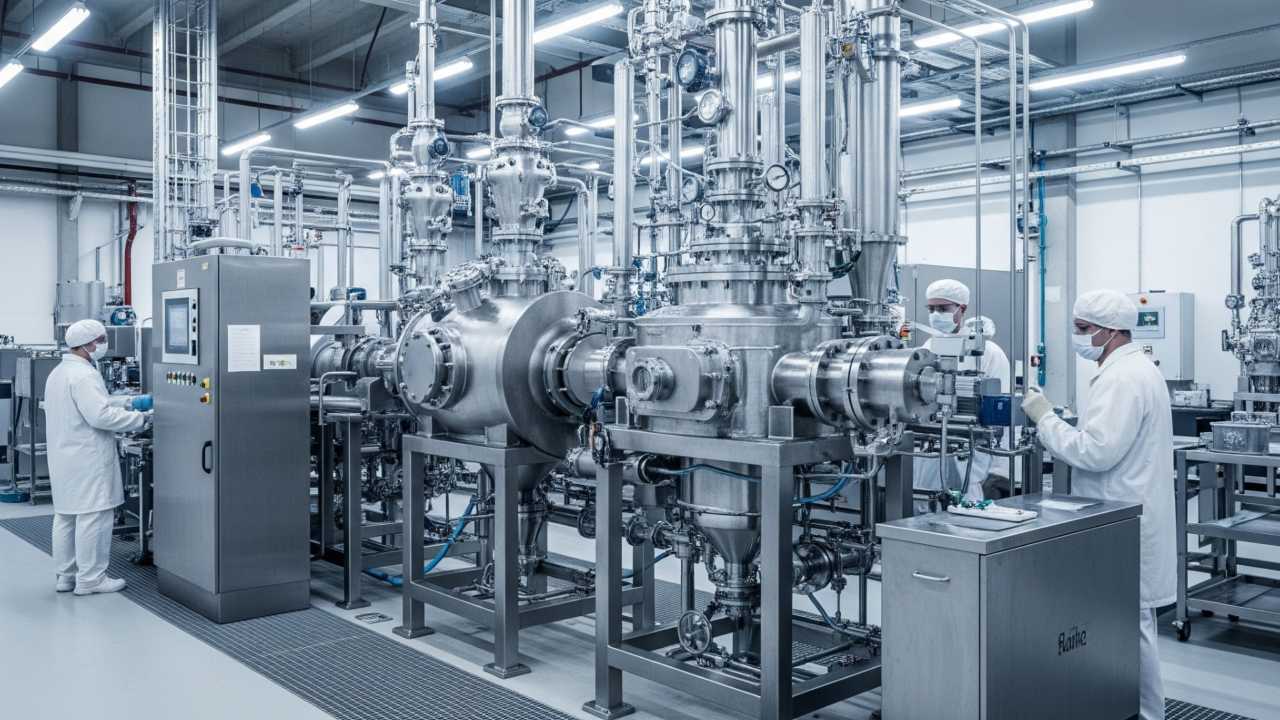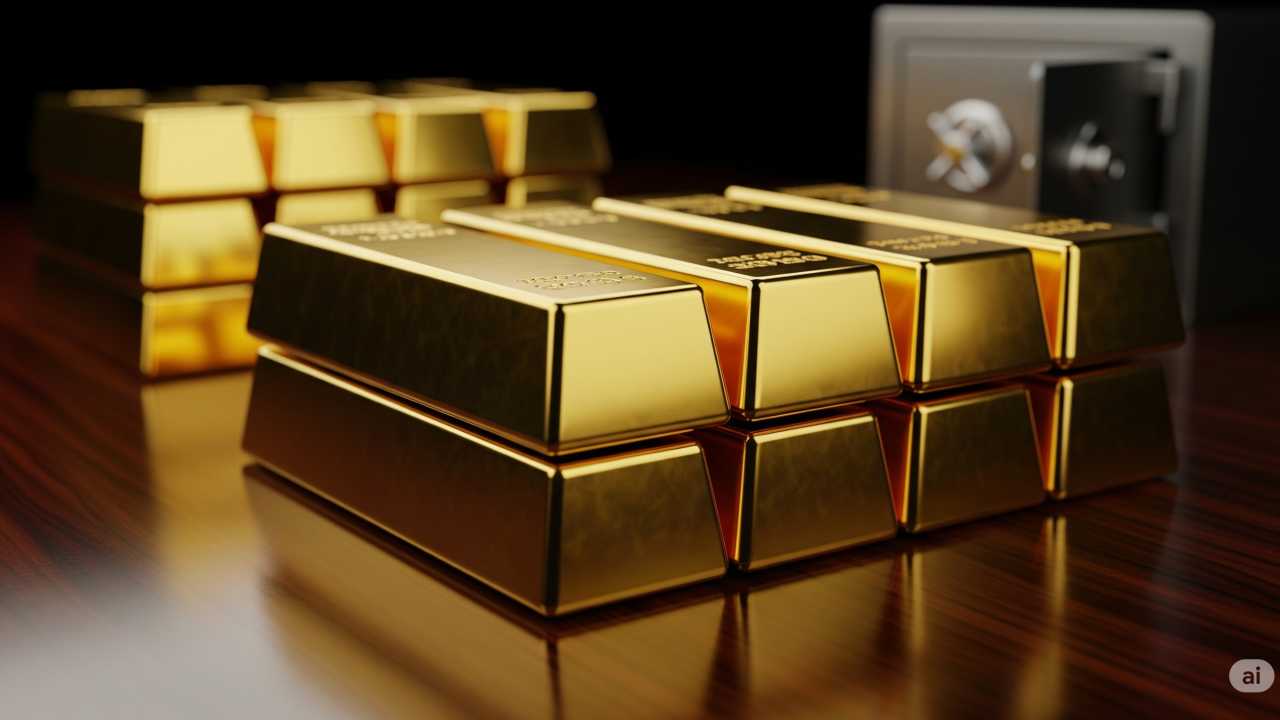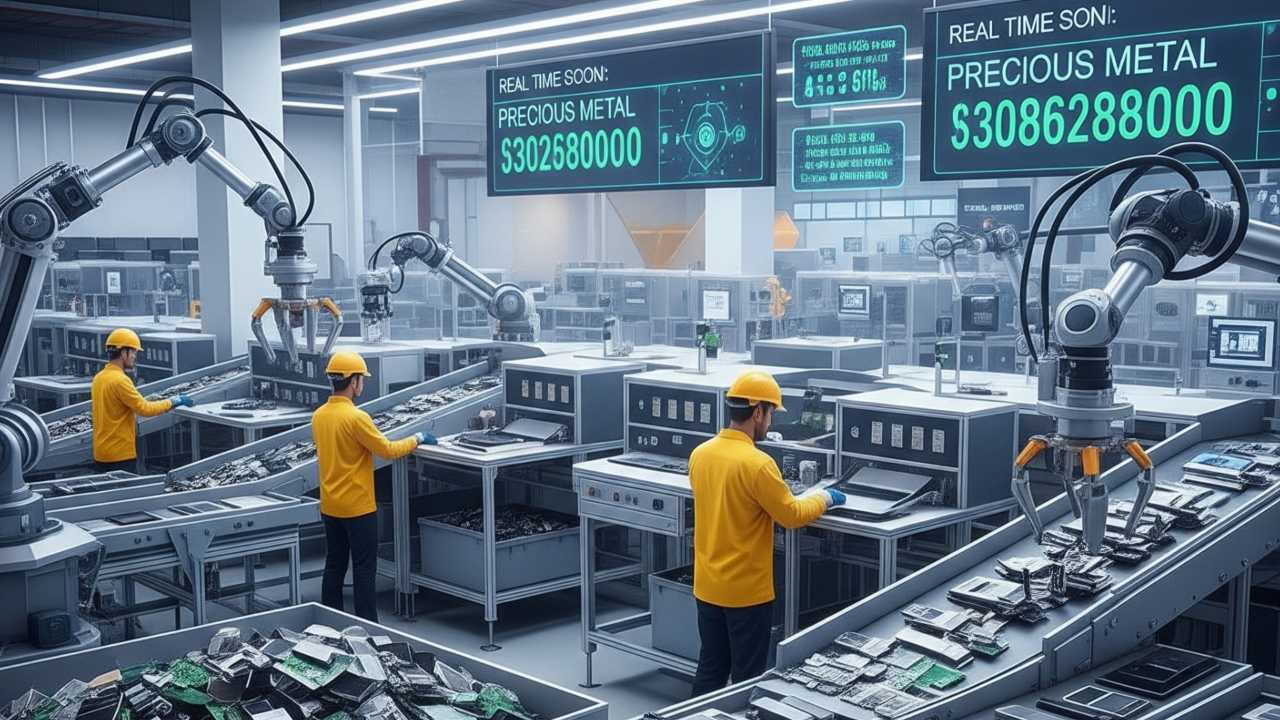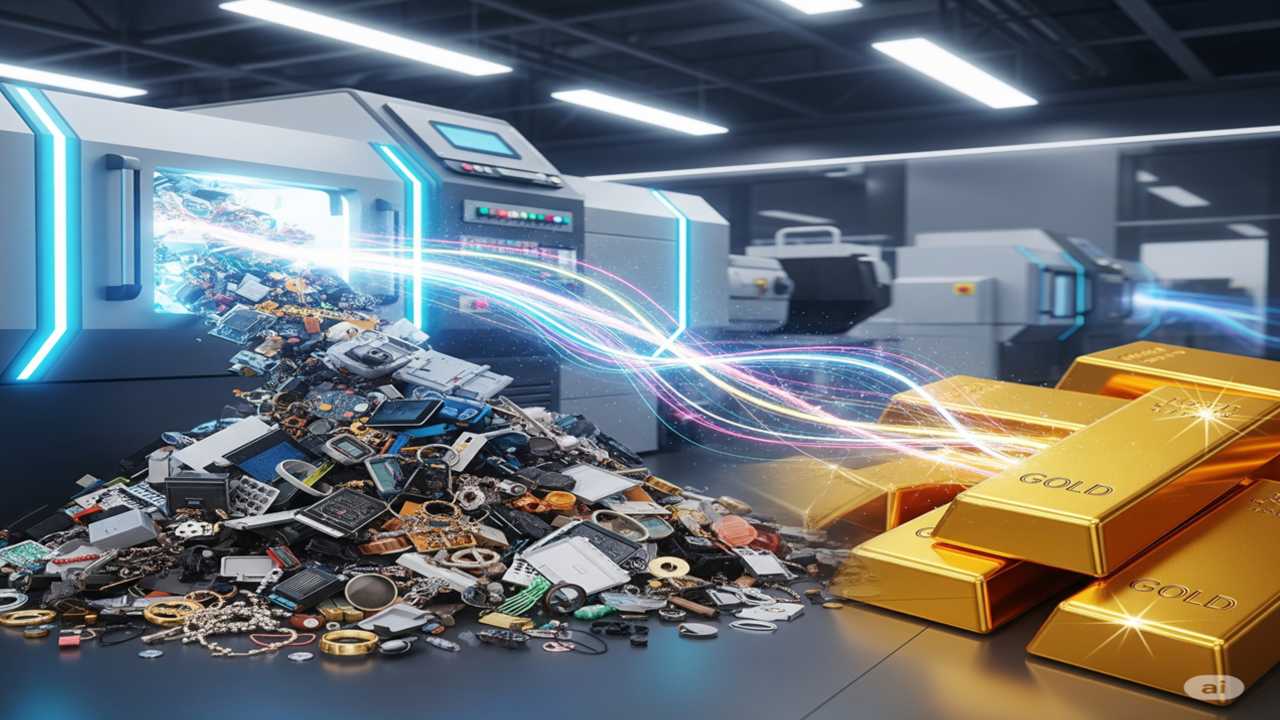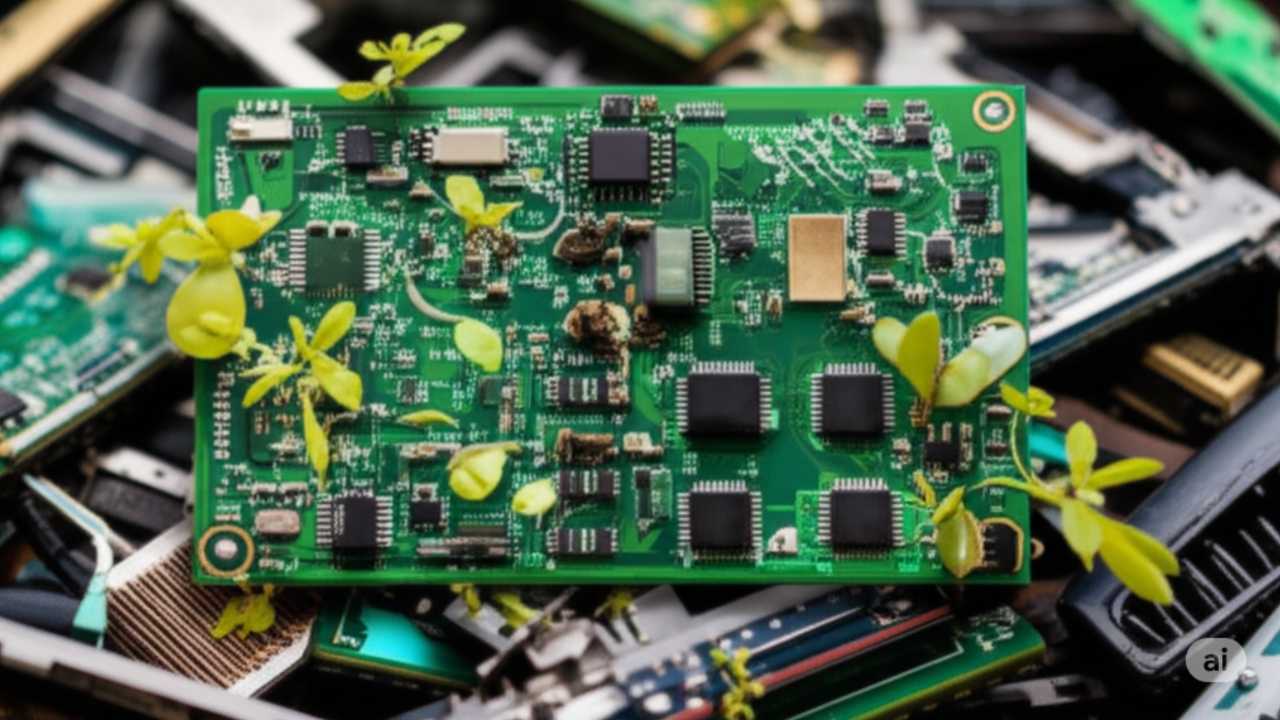How to Choose the Right Precious Metal Refining Machine for Your Business
Precious metal refining is a critical process across a multitude of industries, including jewelry manufacturing, electronics recycling, mining, and dental laboratories. The ability to efficiently recover and purify valuable metals like gold, silver, platinum, and palladium is not just about maximizing profit; it’s about ensuring sustainable resource management, meeting stringent quality standards, and maintaining a competitive edge. Without effective refining, valuable materials remain locked in raw forms or discarded as waste, representing a significant loss of potential revenue and environmental opportunity.
The sheer variety of precious metal refining technologies available today can make the selection process daunting for business owners. Each machine offers a unique set of capabilities, suited for specific applications, volumes, and purity requirements. Choosing the wrong system can lead to inefficiencies, compromised purity, increased operational costs, and even regulatory non-compliance. This comprehensive guide aims to demystify the selection process, providing business owners with a clear roadmap to identify and acquire the precious metal refining machine that best aligns with their operational needs, financial goals, and long-term growth aspirations. By understanding the key considerations outlined in this article, you can make an informed decision that enhances your business’s efficiency, ensures high purity output, and ultimately delivers a robust return on investment.
1. Understand Your Business Needs
Before diving into the technical specifications of refining machines, a thorough understanding of your own business needs is paramount. This foundational step will guide your entire selection process, ensuring you invest in a solution that truly serves your operational requirements and future ambitions.
Firstly, consider the type of precious metals processed. Are you primarily dealing with gold and silver scrap from jewelry manufacturing, or are you looking to recover platinum and palladium from catalytic converters? Perhaps your focus is on a broader spectrum of metals found in e-waste. Different metals exhibit unique chemical and physical properties that necessitate specific refining processes and machine types. For instance, aqua regia systems are highly effective for gold but less so for other metals, while electrolytic refining is excellent for achieving high purity in both gold and silver.
Next, assess your volume and frequency of refining. Are you a small-scale jeweler needing to refine a few kilograms monthly, or an industrial-scale recycler processing tons of material daily? The capacity and throughput of the machine you choose must align with your current and projected volumes. Over-investing in an unnecessarily large machine can lead to inefficient use of resources, while an undersized machine can create bottlenecks and limit your growth.
Identify your specific application area. A machine suited for a large-scale mining operation recovering gold from ore will differ significantly from one used by a dental lab refining gold crowns. E-waste recycling presents its own unique challenges due to the complex matrix of materials, often requiring multi-stage processes including thermal reduction. Understanding the matrix your precious metals are embedded in is crucial for selecting the appropriate pre-treatment and refining methods.
Finally, consider your growth plans. Will your refining needs increase significantly in the next 3-5 years? Investing in a machine that offers scalability or is part of a modular system can save significant costs and disruption down the line. A machine that can adapt to higher volumes or new metal types will provide a greater long-term return on your investment and prevent the need for premature upgrades. A forward-looking approach ensures that your chosen refining solution can evolve with your business.
2. Know the Different Types of Refining Machines
The landscape of precious metal refining technology is diverse, with various systems designed for specific metals, purity levels, and operational scales. Understanding the fundamental principles and applications of each type is crucial for making an informed decision.
Electrolytic Refining Machines are highly effective for achieving exceptionally high purity levels, often up to 99.99% or even 99.999%. These systems operate on the principle of electrolysis, where an impure metal anode dissolves into an electrolyte solution, and pure metal deposits onto a cathode. They are particularly well-suited for refining gold and silver, producing a consistent, high-quality output. The main advantages include high purity and environmental friendliness compared to some chemical methods, but they can have longer processing times for large volumes.
Aqua Regia Refining Systems are a classic method predominantly used for gold refining. Aqua regia, a mixture of nitric acid and hydrochloric acid, dissolves gold, which is then selectively precipitated. These systems are known for their effectiveness in processing various types of gold scrap, including jewelry, dental alloys, and electronic components. While they offer good purity, the use of highly corrosive and hazardous chemicals necessitates robust safety protocols, advanced ventilation, and proper waste treatment.
Induction Melting Furnaces are often the initial step in the refining process, used for melting and homogenizing precious metal scrap. These furnaces utilize electromagnetic induction to generate heat, offering rapid melting times and efficient energy transfer. They are versatile and can handle a wide range of metals, preparing them for subsequent refining stages like electrolytic or chemical treatments. While not a refining method in themselves, their role in initial preparation is indispensable.
Thermal Reduction Systems are high-temperature furnaces designed for metal recovery, particularly from complex matrices like e-waste, industrial catalysts, and certain types of ore. These systems involve heating the material to extremely high temperatures, often under controlled atmospheric conditions, to vaporize or separate the metals from other components. They are excellent for processing large volumes of mixed materials but typically require further refining steps to achieve high purity.
Vacuum Distillation Units represent high-end systems for achieving ultra-pure metal separation, especially for precious metals with different boiling points. By operating under vacuum, these units allow for distillation at lower temperatures, reducing energy consumption and material degradation. They are typically used for highly specialized applications where extreme purity is a critical requirement.
To provide a clearer overview, here’s a comparison table:
| Type of Machine | Best for | Pros | Cons |
| Electrolytic Refining | High-purity Gold, Silver | Achieves very high purity (99.99%); less chemical usage | Slower processing time; higher initial cost |
| Aqua Regia Refining | Gold | Effective for various gold scrap; good purity | Uses hazardous chemicals; requires careful waste management |
| Induction Melting Furnaces | Melting & Homogenizing | Rapid melting; versatile for various metals; energy-efficient | Not a refining method; requires subsequent refining |
| Thermal Reduction Systems | E-waste, Ores | Good for complex materials; high volume processing | Requires further refining for purity; high energy consumption |
| Vacuum Distillation Units | Ultra-pure Metal Separation | Achieves extreme purity; lower temp distillation under vacuum | High initial investment; specialized application |
3. Purity and Output Quality
The ultimate goal of precious metal refining is to achieve a high degree of purity in the recovered metals. The desired refining precision will significantly influence your machine choice. Refining machines vary widely in the purity levels they can consistently achieve. For example, some basic systems might produce metals with 99.5% purity, which might be acceptable for certain industrial applications. However, for investment-grade gold or specialized electronics, a purity of 99.99% or even 99.999% (five nines) is often required. The higher the desired purity, the more sophisticated and often more expensive the refining technology will need to be. Understanding the market demands for your refined output is crucial here; selling 99.5% pure gold will yield a different price than 99.99% pure gold.
It is absolutely vital to ensure that your chosen machine helps you meet relevant standards and compliance requirements. For instance, for gold, the London Bullion Market Association (LBMA) Good Delivery List sets rigorous standards for the purity and provenance of gold bars. If your business intends to sell its refined metals on international markets or to financial institutions, adherence to such standards is non-negotiable. Research the specific purity requirements and certifications relevant to your industry and target markets.
Finally, consider the importance of testing and certification capabilities. While some high-end machines might come with integrated testing equipment, such as X-ray fluorescence (XRF) analyzers for immediate purity verification, others may require separate, compatible external devices. Having reliable testing capabilities is essential not only for internal quality control but also for providing verifiable proof of purity to your clients. Certification from reputable third-party laboratories further enhances the credibility and marketability of your refined metals. Investing in a system that either includes or is easily integrated with accurate testing tools will safeguard your reputation and ensure consistent quality output.
4. Technical Specifications to Consider
Beyond the type of refining system, a deep dive into the technical specifications of each machine is essential to ensure it aligns perfectly with your operational demands.
Capacity is a primary consideration, typically measured in kilograms or grams per batch. This dictates how much material the machine can process in a single cycle. Your chosen capacity should comfortably accommodate your current processing volumes, with a buffer for future growth. An undersized machine will lead to bottlenecks and inefficiencies, while an oversized one might result in wasted energy and resources.
Cycle Time refers to the duration required for one complete refining session, from loading to the output of refined metal. A shorter cycle time means higher throughput, which is crucial for high-volume operations. However, a balance must be struck with purity requirements; sometimes, longer cycles are necessary to achieve ultra-high purity.
The Temperature Range capabilities are vital, particularly for thermal reduction systems and induction melting furnaces. Ensuring the machine can reach and maintain the necessary temperatures for melting or separating specific metals is critical for effective processing.
Understanding Chemical Usage and Safety Features is paramount for systems employing chemical processes like aqua regia. Quantify the volume and type of chemicals consumed per batch. More importantly, scrutinize the safety features: closed-loop systems, automated chemical dispensing, fume extraction (scrubbers), emergency shut-offs, and robust material construction resistant to corrosion are non-negotiable. The machine should minimize operator exposure to hazardous substances.
The Automation Level impacts labor costs and consistency. Fully automated systems require less manual intervention, leading to higher precision and reduced human error, but come with a higher initial investment. Semi-automated or manual systems might be more budget-friendly but demand more skilled labor and active monitoring.
Energy Efficiency and Environmental Impact are increasingly important. Evaluate the machine’s power consumption (kW/h) and look for features like energy recovery systems. A machine with lower energy consumption not only reduces operating costs but also aligns with corporate sustainability goals. Simultaneously, assess its environmental footprint, including water usage and waste generation.
Finally, consider the Ease of Operation and Maintenance. A complex machine may require extensive training for operators, increasing initial setup costs and potential for errors. Look for intuitive controls, clear diagnostic displays, and readily accessible components for routine maintenance. A machine that is easy to service will minimize downtime and extend its operational lifespan. Requesting demonstrations and speaking with current users can provide valuable insights into the real-world ease of use and maintenance.
5. Cost Considerations
The financial implications of acquiring a precious metal refining machine extend far beyond the initial purchase price. A comprehensive evaluation of all cost components is crucial for a sound investment decision.
The Initial Investment vs. Long-term Value is a critical balance to strike. While a lower upfront cost might seem appealing, it could signify compromises in capacity, purity output, safety features, or durability. A machine with a higher initial price tag but superior energy efficiency, lower chemical consumption, minimal maintenance requirements, and a longer lifespan can deliver significantly greater long-term value and a better overall return on investment. Consider the total cost of ownership over the machine’s expected operational life, not just its sticker price.
Running Costs are ongoing expenses that can quickly add up. These include:
- Energy: The power consumption of the machine, particularly for high-temperature processes or continuous operation.
- Chemicals: For chemical refining systems, the cost of acids, reagents, and other consumables.
- Maintenance: Routine servicing, replacement of wear parts, and unexpected repairs.
- Labor: The number of operators required and their skill level.
- Waste Disposal: Costs associated with treating and disposing of hazardous byproducts and wastewater in an environmentally compliant manner.
A thorough analysis of these running costs will reveal the true operational expense of the machine. Requesting consumption data from manufacturers or existing users can provide realistic estimates.
Estimating the Return on Investment (ROI) is perhaps the most important financial metric. This involves projecting the revenue generated from the refined metals against the total cost of acquiring and operating the machine. Calculate your potential output volume and purity, then estimate the market value of your refined metals based on current precious metal prices. Factor in the cost savings from refining in-house versus outsourcing, and the potential for increased profit margins due to higher purity or faster processing. A well-chosen refining machine should demonstrate a clear and favorable ROI within a reasonable timeframe, making it a valuable asset rather than a significant expenditure.
6. Safety and Environmental Compliance
In the realm of precious metal refining, safety and environmental responsibility are not merely good practices; they are legal obligations and fundamental to sustainable business operations. Overlooking these aspects can lead to severe penalties, reputational damage, and significant operational disruptions.
One of the primary concerns is the generation of toxic byproducts, which can include hazardous fumes, corrosive acids, and metallic slag. Chemical refining processes, in particular, often involve the use of strong acids like aqua regia, which produce noxious gases and acidic waste. Thermal processes can also release particulate matter and other emissions. It is crucial to understand the nature and volume of these byproducts generated by the machine you are considering.
A robust refining machine must incorporate effective emission control features. This includes:
- Scrubbers: Systems that neutralize acidic or toxic fumes before they are released into the atmosphere.
- Filters: For capturing particulate matter and preventing its discharge.
- Closed Systems: Designs that minimize or eliminate the release of fumes and chemicals into the working environment, protecting operators.
- Wastewater Treatment: Integrated or compatible systems for treating contaminated water to meet discharge standards.
These features are essential for safeguarding both human health and the environment.
Crucially, you must be aware of and adhere to all relevant local regulations and certifications required. In many regions, regulatory bodies like the Environmental Protection Agency (EPA) in the US, or equivalent national and local environmental agencies, impose strict limits on emissions, wastewater discharge, and hazardous waste disposal. International standards like REACH (Registration, Evaluation, Authorisation and Restriction of Chemicals) and RoHS (Restriction of Hazardous Substances)1 might also be relevant, especially if your refined products are for export or used in specific industries. Ensure the machine and its associated processes allow you to easily comply with these regulations. Request documentation from manufacturers demonstrating compliance and inquire about their recommendations for proper waste management and disposal. Investing in a machine that is inherently designed for safety and environmental stewardship will protect your business from legal liabilities, contribute to a positive public image, and ensure long-term operational viability.
7. Manufacturer and Brand Reputation
The longevity and success of your precious metal refining operation will heavily depend on the reliability of your chosen machine and the support you receive. This makes the manufacturer and brand reputation a crucial factor in your decision-making process.
Opting for trusted brands in the industry provides an immediate level of assurance. Established manufacturers often have a proven track record of producing high-quality, durable, and efficient refining equipment. They are more likely to have invested significantly in research and development, resulting in technologically advanced and reliable machines. Research their history, their specialization in refining equipment, and their market standing.
A robust warranty and support services package is indicative of a manufacturer’s confidence in their product. A comprehensive warranty protects your investment against manufacturing defects. Beyond the warranty, evaluate the availability and quality of their support services. Do they offer technical assistance, troubleshooting, and repairs? What are their response times? Accessibility to expert support can be critical in minimizing downtime and resolving operational issues quickly.
The availability of spare parts and consumables is often overlooked but profoundly important. Even the most reliable machine will eventually require replacement parts, such as crucibles, electrodes, or specific chemical reagents. Inquire about the lead times for common spare parts and consumables. A readily available supply ensures that your operations are not brought to a halt due to a missing component. Relying on a manufacturer with a strong supply chain network can prevent costly delays.
Finally, seek out user reviews and case studies. Hearing directly from other businesses that have purchased and operated the manufacturer’s machines can provide invaluable real-world insights into their performance, reliability, and the quality of after-sales support. Case studies often highlight specific benefits, challenges overcome, and the ROI achieved by other users. These testimonials can offer a more candid perspective than marketing materials alone, helping you validate the manufacturer’s claims and make a more informed decision.
8. After-Sales Service and Technical Support
The purchase of a precious metal refining machine is a significant investment, and the quality of after-sales service and technical support provided by the manufacturer can be as critical as the machine itself. Excellent support ensures smooth operations, minimizes downtime, and prolongs the lifespan of your equipment.
Crucially, inquire about installation and training services. A complex refining machine requires proper installation to function optimally and safely. Does the manufacturer offer professional installation by certified technicians? Equally important is comprehensive training for your operating staff. This training should cover everything from daily operation and routine maintenance to troubleshooting minor issues and safety protocols. Adequate training empowers your team, reduces operational errors, and enhances overall efficiency.
Next, understand the available maintenance packages. Many manufacturers offer various levels of service contracts, from preventative maintenance visits to full-service agreements. Regular, scheduled maintenance performed by expert technicians can identify potential issues before they become major problems, ensuring the machine operates at peak performance and extending its operational life. Compare the offerings and determine which package best suits your budget and risk tolerance.
Finally, assess the availability of remote diagnostics and support. In today’s interconnected world, many modern refining machines come with IoT capabilities, allowing manufacturers to remotely diagnose issues, monitor performance, and even push software updates. This can significantly reduce the need for on-site visits, saving time and money. Ask about their remote support capabilities, response times for technical queries, and the channels through which support can be accessed (phone, email, online portal). A manufacturer that offers robust and accessible after-sales support demonstrates a long-term commitment to their customers’ success.
9. Future-Proofing and Scalability
In a dynamic business environment, anticipating future needs is a strategic imperative. When investing in a precious metal refining machine, consider its potential for future-proofing and scalability to ensure it can evolve with your business growth and technological advancements.
Look for machines that feature modular designs for expansion. A modular system allows you to add or upgrade components as your business expands, rather than having to replace the entire unit. For instance, you might initially purchase a refining system with a certain capacity, and then later add additional modules to increase throughput or introduce capabilities for processing different types of metals without a complete overhaul. This approach offers flexibility and cost-effectiveness in the long run.
Software upgrades are another key aspect of future-proofing. Modern refining machines often incorporate sophisticated control software. Inquire about the manufacturer’s policy on software updates. Regular updates can introduce new features, improve efficiency, enhance safety protocols, and even address compatibility issues with other systems. A machine whose software can be easily updated will remain current with evolving industry standards and technologies.
Finally, consider the machine’s potential for integration with digital systems / IoT / ERP. The trend towards Industry 4.0 means that machines are increasingly connected. Can the refining machine integrate seamlessly with your existing Enterprise Resource Planning (ERP) system for inventory management, production tracking, and cost analysis? Does it offer Internet of Things (IoT) capabilities for real-time data monitoring, predictive maintenance, and remote control? Such integration can provide invaluable insights into your refining operations, optimize efficiency, and enable data-driven decision-making, positioning your business for future growth and competitiveness. Investing in a machine with these capabilities ensures that your refining operations are not just efficient today, but also adaptable and intelligent for tomorrow.
10. Decision-Making Checklist
To simplify your selection process, here’s a comprehensive checklist covering the critical factors discussed:
- Capacity: Does the machine meet your current and projected volume requirements? ✔️
- Purity: Can the machine consistently achieve your desired metal purity levels and meet industry standards? ✔️
- Safety: Does it have robust safety features, especially concerning chemical handling and emission control? ✔️
- Budget: Does the total cost of ownership (initial investment + running costs) align with your financial plan and expected ROI? ✔️
- Support: Does the manufacturer offer comprehensive after-sales service, technical support, and accessible spare parts? ✔️
- Environmental Compliance: Does the machine facilitate adherence to all relevant environmental regulations and minimize ecological impact? ✔️
- Brand Trust: Does the manufacturer have a strong reputation, positive user reviews, and a proven track record? ✔️
- Scalability: Does the machine offer options for future expansion, software upgrades, and integration with digital systems? ✔️
- Chemical Usage: Are the chemical consumption rates manageable, and are there less hazardous alternatives if applicable? ✔️
- Energy Efficiency: Is the machine designed for optimal energy consumption, reducing operational costs? ✔️
- Cycle Time: Does the processing speed meet your throughput requirements? ✔️
- Ease of Operation: Is the machine user-friendly and does it require extensive specialized training? ✔️
Final Thoughts and Recommendations
Choosing the right precious metal refining machine is a pivotal decision that directly impacts the efficiency, profitability, and sustainability of your business. As this guide has demonstrated, it’s not a one-size-fits-all solution; the ideal machine is one that precisely matches your unique business needs, operational scale, and long-term aspirations.
The journey begins with a thorough self-assessment of your business. Understand the types of metals you process, your volume and frequency requirements, your specific application area, and your plans for growth. This foundational understanding will illuminate the path toward the most suitable refining technology. Subsequently, familiarize yourself with the diverse range of refining machines available—from electrolytic systems renowned for high purity to thermal reduction units for complex waste streams—and their respective advantages and limitations.
Beyond the core refining method, delve into critical technical specifications such as capacity, cycle time, temperature range, and levels of automation. Critically evaluate the machine’s ability to achieve your desired purity levels and ensure compliance with industry standards. Cost considerations must extend beyond the initial investment to encompass running costs, maintenance, and a realistic calculation of your return on investment. Crucially, never compromise on safety and environmental compliance; prioritize machines with robust emission control features and a design that facilitates adherence to all relevant regulations.
The reputation of the manufacturer and the quality of their after-sales service and technical support are equally vital. A reliable brand with comprehensive warranty, readily available spare parts, and responsive support can prevent costly downtime and ensure long-term operational success. Finally, consider the future: opt for machines with modular designs, upgradeable software, and digital integration capabilities to future-proof your investment and enable seamless scalability as your business evolves.
Before making your final purchase, we strongly encourage consulting with industry experts, refining specialists, or experienced engineers. Their insights can provide invaluable perspectives, help you navigate complex technical details, and validate your decision. The right choice in a precious metal refining machine is not just an expenditure; it is a strategic investment that will significantly boost your operational efficiency, ensure product purity, enhance workplace safety, and ultimately contribute to the financial health and environmental stewardship of your business for years to come. By making an informed and strategic decision, you are not just buying equipment; you are investing in the future of your refining enterprise.




